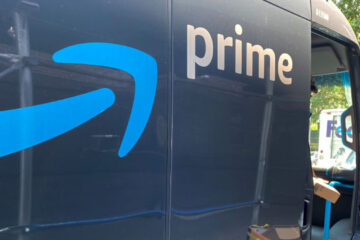It’s a pretty difficult time to be a retailer.
While many are still catching their breath from the confusion and upheaval caused by the Covid pandemic, changes just keep coming.
Related: Home Depot quietly makes a change that may enrage customers
Five years ago, Covid sent most of America’s retailers into a panic when most stores shuttered overnight and foot traffic fell to nearly zero.
Many are still recovering from this jolt; it’s estimated that a record number of stores are expected to close in 2025 and some of our most iconic retailers, like Party City and Forever 21, have either filed for bankruptcy or are no longer operating.
Those that remain are having a hard time keeping up with the new, ever-changing landscape.
A rise in inventory shrink — or the industry term for theft and other losses — has taken a bite out of profits.
Customers are choosing to shop differently; most of us shop for more things online than ever before. And a consolidation between some of the biggest retailers in the country has edged out more niche, smaller operations.
Add to that the recent uptick in tariffs, and most retailers would tell you the only way to survive is to keep their collective heads on a swivel.
A Target employee loads groceries into a car. Many large retailers are still recovering from the disruption caused by the pandemic.
Image source: Target
Retailers try to navigate tariffs
Now, one of the biggest issues retailers are facing is higher tariffs, or the duty companies pay on imported (non-domestic) goods.
Over a month ago, President Trump announced a sweeping round of tariffs that would be imposed on some of our largest trade partners.
At the time, those tariffs affected China most heavily; a 145% duty would be imposed on most goods coming overseas from China to the U.S.
More Retail:
Home Depot makes drastic budget-friendly move to take on Lowe’sStruggling cosmetics brand sounds alarm, laying off thousandsPopular Trader Joe’s wine brand has bad news, making harsh choiceStruggling retail chain sounds the alarm on growing problem
In retaliation, China imposed a 125% tariff on U.S. goods.
Now, however, the Trump Administration has shifted its policy toward China.
The U.S. and China have both agreed to put a 90-day pause on their tariffs. The U.S. will impose just a 30% tariff on Chinese imported goods, and China brought its duty down to 10% on U.S. goods.
U.S. retail stocks react to tariff news
Unsurprisingly, this is welcome news to many retailers, many of whom source a majority of their goods from China.
Many of the largest retailers in the U.S. had spent the better part of a month warning customers that things were about to get a lot more expensive. Some toyed with the idea of passing off higher costs to customers, while others said they may seek domestic suppliers (which could result in a temporarily halted supply chain).
Related: Bankrupt retail chain gets possible billion-dollar rescue lifeline
Now, however, many U.S.-based retailers are soaring in reaction to the good news that astronomical tariffs are off the table — at least for now.
Target (TGT) is up nearly 4% today as of this writing.
XRT (XRT) , which is an ETF that tracks apparel, department store, consumer staples, and other retail stocks, is up nearly 5%.
Here’s a look at some other retail stocks that are flying today:
Nike: +7%Under Armour: +5%Lululemon: +8%Abercrombie & Fitch: +5%Amazon: +7%Best Buy: +5%Wayfair: +21%
Dan Ives, Managing Director at Wedbush Securities, called the change a “best case scenario” for investors, adding, “We believe new highs for the market and tech stocks are now on the table in 2025.”
But others have encouraged caution.
“Even if quite modest tariffs remain, that could make a large difference to trade flows as many Chinese exports to the U.S. are low-margin and price sensitive,” said Simon Edelsten, a fund manager at Goshawk Asset Management.


